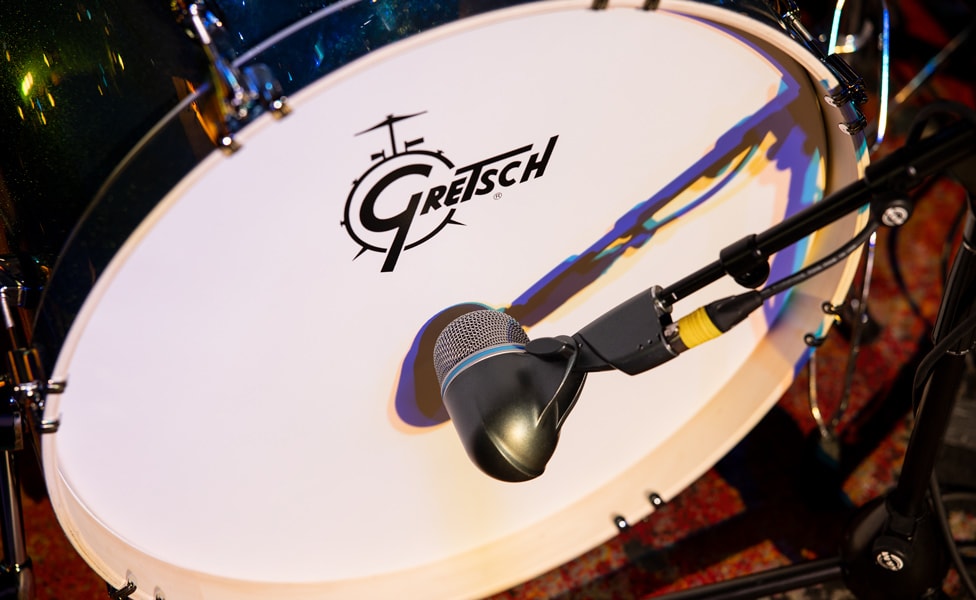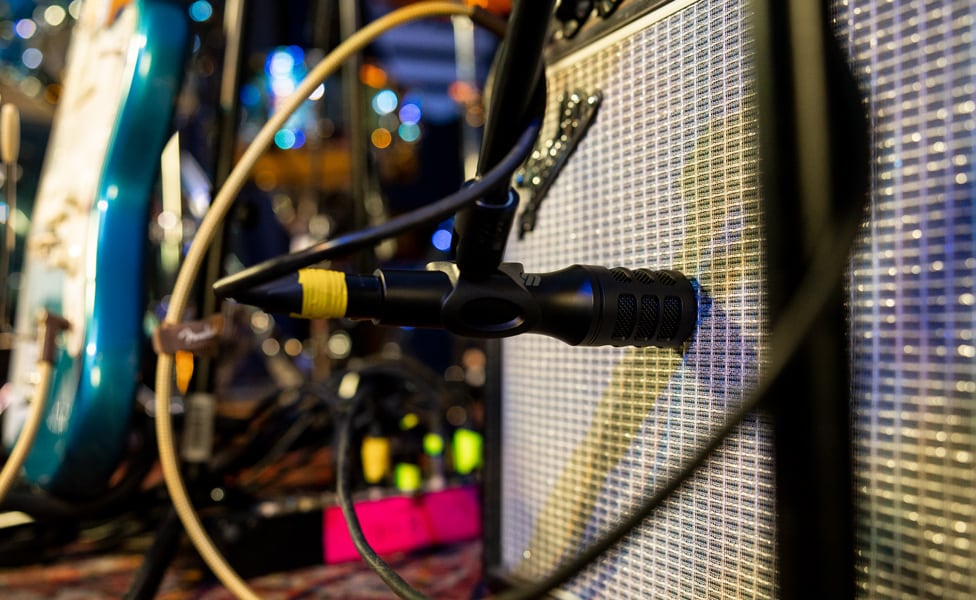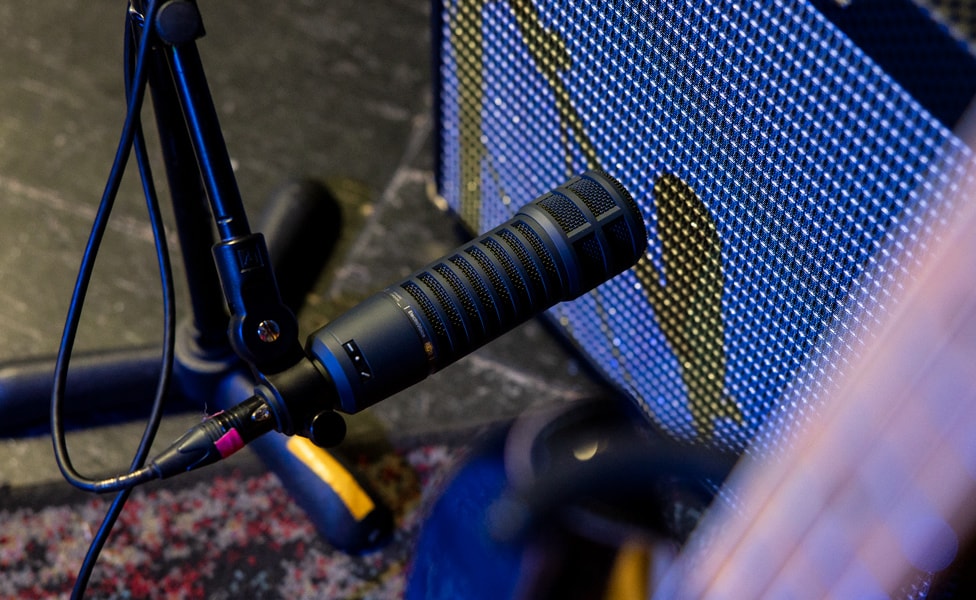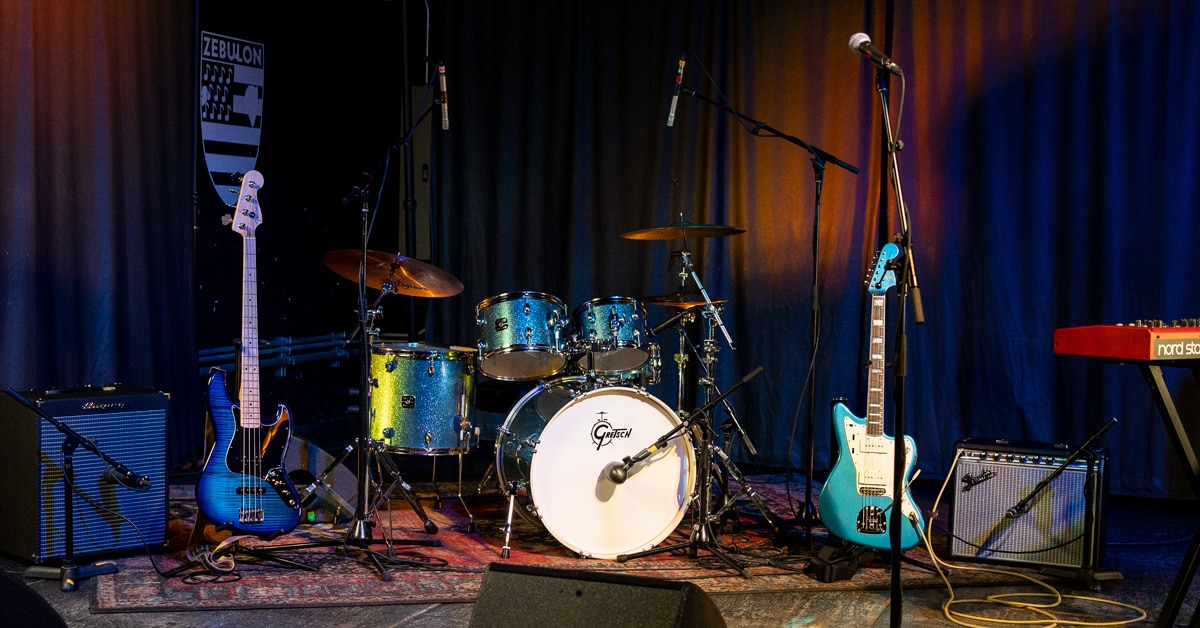Keeping control of your live sound is one of the most important jobs for any gigging musician. Keeping track of your whole band's live sound might be even more important. After all, if you sound fantastic and the rest of the band sounds, "meh," nobody's winning there. Whether you're just beginning to gig, getting back to it after a long layoff or moving up to playing in a different type of venue, it can be hard getting the right mics in the right places to get the sound you want on the budget you have. This is especially true in smaller venues where the sound system may not have as many inputs as you might have wanted, or simply isn’t designed for the coverage you desire. This can happen whether it's the house PA or your painstakingly assembled personal system. We're going to work hard here to give you some basic guidelines, some of which won't cost you a dime, and others that will keep you from overspending, to maximize your investment in matching up your live sound with the one that's in your head.

Table of Contents
Sometimes Less Is More—Minimizing Mic Count
Keeping Singers Comfortable—Stick With Mics They Know
Avoiding Bleed and Feedback—Keep Pickup Patterns Tight
Not Just for Recording—People Don't Fear the Ribbons
How to Create a Plan for Drums
Bonus Tips for Getting the Most Out of Your Gig
Sometimes Less Is More—Minimizing Mic Count
Unless you're starting out playing large venues, keeping the number of mics you're using to a minimum can be an important factor for a number of different reasons:
- Minimizing mic count helps keep the band's (or, if you're a solo performer, your) budget under control. This is usually fairly important when you're first starting to gig.
- Fewer mics make for faster setup.
- The more mics there are on stage, the more likely feedback becomes, especially in a situation where the house sound person may be as new to their job as you are to performing. More mics also mean potential issues with phase cancellation in your sound, which takes time to fix (if you can) and isn't fair to the audience.
- Especially in smaller venues, the house mixer may have a limit on how many mics it can handle. If they've only got six mic inputs and you're planning on using eight mics, something has to give. One solution there, of course, is to have your own mixer that you can swap in. If that idea appeals to you, check out our mixer buying guide. Or, if you want to put together your own sound system because you play some clubs that don't have a good one (or maybe even don't have one at all), you'll want to check out our PA system buying guide.
- Keeping your mic count down also makes it easier for the FOH (front of house) sound engineer. If they're on the less-experienced end, they may get overwhelmed by having to deal with too many mics. Even with an experienced house sound crew, if they're not that familiar with your sound, an overly complicated setup makes it harder for them to give your audience what you want your performance to convey.
How do we minimize mic count while making sure we’ve got enough coverage? The main way is to know the venue and to know your own gear. First, think about the size of the room and your stage volume. Do you really need to mic the drum kit or a bass amp, for example? Will your normal stage volume fill the room? Do you have signals that can go direct to the house mixer or to a monitor mix? If you have band members who only occasionally sing backup parts, are people comfortable with sharing a mic? So, look at what everybody's using and make those calls. Amp modelers, such as Line 6's Helix family, and modern D.I. boxes can reduce your need for mics, make for a cleaner stage look and, especially in smaller venues, help you craft a tighter sound for the audience.

Keep Singers Comfortable—Stick With Mics They Know
When it comes to vocal mics, every vocalist seems to have a favorite. Certainly, different singers may sound better on one type of mic capsule than they do on another. It depends on both the basic tonality of their voice and their individual mic technique. There are several benefits to asking your vocalists to use a mic they already own.
- Once a vocalist has found a mic that works with their voice, you've got the first step toward a consistent vocal sound for them, and for your band.
- If you own it, you can learn all the little eccentricities a specific mic might have, like how to work proximity effect, how much gain you can safely use before feedback, how to EQ that mic for a particular singer and so forth. You can even feel free to get a little physical with it, if that's what works for your performance, without worrying about having to apologize to the venue for the dented windscreen.
- Who wants to sing into a mic that's been screamed into by a zillion strangers? Just sayin'.
If your vocalists don't already own a mic, we would encourage them to dig into our guide to the top live vocal mics and find the one that works best for them.
In addition, when you start getting into situations where you need to start miking drums and amps, but aren't yet at the point where you're contracting touring sound companies, encourage the instrumentalists in your band to take a similar approach (about which, more below).
Avoiding Bleed and Feedback—Keep Pickup Patterns Tight
EEEEEEEEEEEEEEEEEEEEEEEE!!!!!!! Feedback, sadly, is a fact of life, especially in smaller venues where it's harder to keep the mics away from mains or monitors. It's not pleasant for you or for the audience. One of the best ways to help avoid it is to stick with the tightest polar patterns and mic coverage you can find. So, whether for vocals or instruments, try and stick to mics with hyper-cardioid and super-cardioid polar patterns. It also helps to use as tight a coverage as you can (i.e. extreme close miking of amps and individual instruments so you can keep the amount of gain in the mixer's mic preamps as low as possible). An added advantage of this is that it will give extra freedom in where you can place any wedges or other monitors on stage.

Not Just for Recording—People Don't Fear the Ribbons
For instrumental mics, let's take a minute to talk about ribbon mics. Ribbons, because their design means they "hear" more closely to how a human ear does, are really good at a lot of things, especially sources that benefit from the big, warm nature of their sound. There’s nothing quite like a ribbon mic to take the “fizz” off an overdriven guitar sound or tame the harshness cymbals can sometimes have in overheads. Ribbons also tend to blend really well with both dynamic and condenser mics. Before the late 20th century, ribbons had a reputation of being fragile, but modern material science and design have put that to bed. New ribbons and active preamps in ribbon mics make them an excellent option. If you find this concept intriguing, you'll want to check out both our article on “How Ribbon Mics Work” and our microphone buying guide to get the inside info on these very versatile microphones.
How to Create a Plan for Drums
One of the keys to sounding spectacularly good is to make sure that your drummer and your bassist are playing as tightly locked as possible. If they're not, the rest of the band will sound off, even if they're playing in perfect unison. One of your key jobs here, working with the drummer and bass player, is to make sure they can hear each other clearly so that pulse never gets interrupted.
- Find the optimum mic placements for the drum kit. It can be an interesting balancing act since a lot of it will be dependent on the individual's drumming style. Some drummers are laidback, and others can get pretty physically demonstrative. So, be careful to position mics where they will be less likely to get hit during fills or as the drummer increases intensity.
- Make sure that you're picking up the drums that the bassist needs to hear the most. Which means that, if you're limited in mic count, it's more important to get the kick drum miked than the snare, and the snare before cymbals, etc. Note that, even if you don't need mics on the drums to fill the room, onstage acoustics and your setup requirements might be such that you still need a mic on the kick drum fed through a monitor so the bassist can really lock into what the drummer is doing. You might even consider a small mixer that feeds a monitor just for the bassist—not absolutely necessary, but in some situations, it could make the difference between a good performance and a great one.
- Not a miking thing, as such, but it's equally important that the drummer hear the bass. So, you should make sure that the bass cabinet is placed so the drummer hears what he needs. If that's not possible, a small satellite bass cabinet or small auxiliary amp could be placed where the drummer can get all the low end they could possibly desire.

Bonus Tips to Get the Most Out of Your Gig
There are five things that can make a difference for your live performances. Here's a bonus tip that may cost some money, but it can make your performances incredibly consistent from venue to venue and give you way more control over how you sound, both to your audience and to yourselves. Take a look at our article on stage monitoring systems—there's a lot of good info in there, but we're suggesting that you pay particular attention to the section on how to build out an easily portable DIY in-ear-monitoring rig for your band that's near the end of the article. If you spend a little money and a little time dialing in mixes for in-ears, you'll never have to worry about what kind of monitor system a venue might have, and everybody in the band will hear exactly what they want/need to, no matter where you're playing. A really well-designed and well-tuned monitor system can even reduce the overall number of mics you need, simplifying your setup and soundcheck. And, you'll have more stage room without a bunch of wedges getting in the way. If your singer loves the classic move of perching a foot up on a wedge to work the audience, that's no problem, and it's even easier when they don't have to worry about feedback. Another big plus is that house sound crews love nothing better than a band that comes prepared to get serious about their performance.

So, take a little time and have the discussion with the rest of your band. Point them at the articles we've mentioned here and talk to our Gear Advisers in your local Guitar Center store or at our Contact Center to get more details or if you have questions about any of these concepts. We're looking forward to seeing you out there in the clubs and hearing you giving your all.




